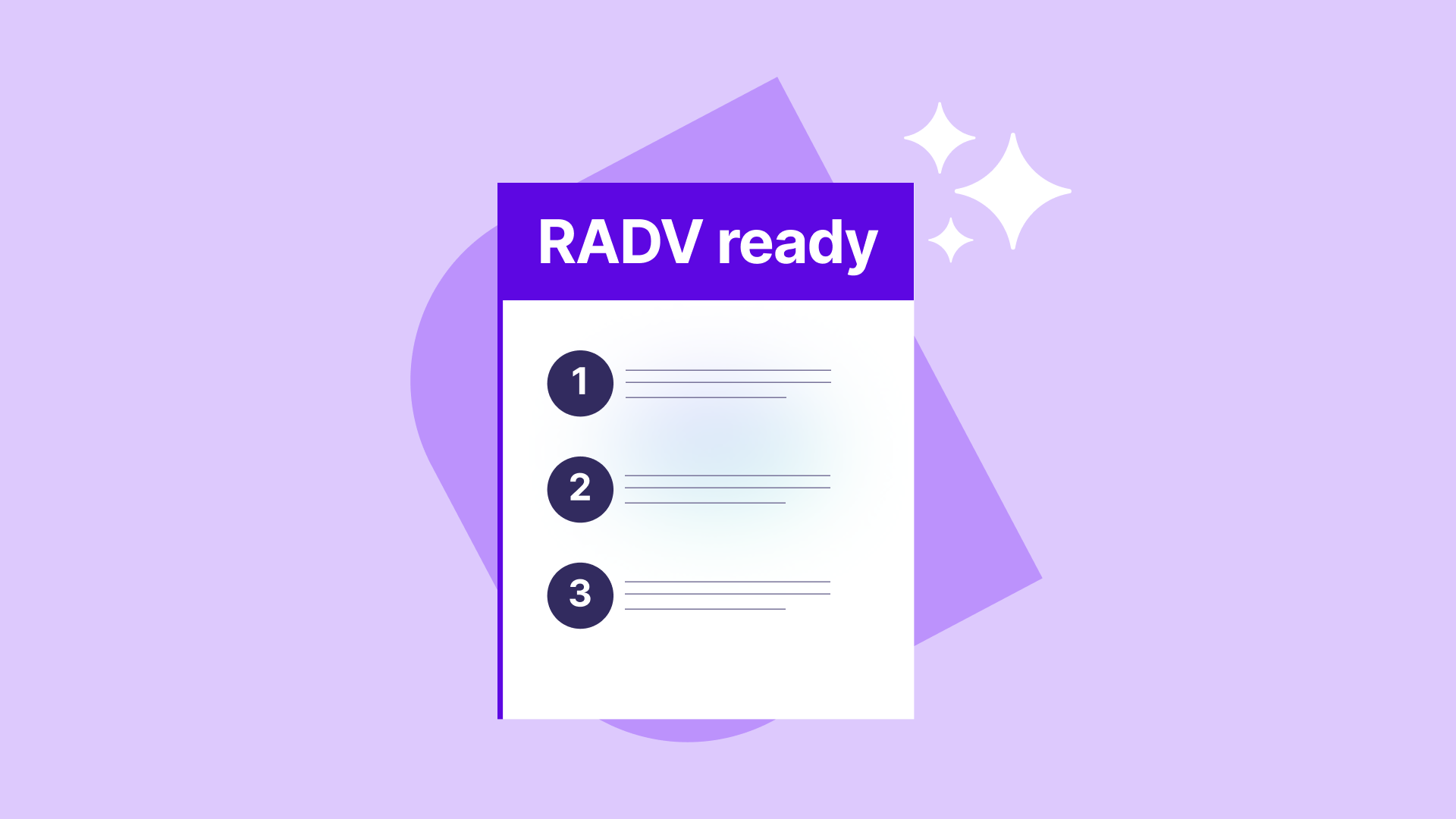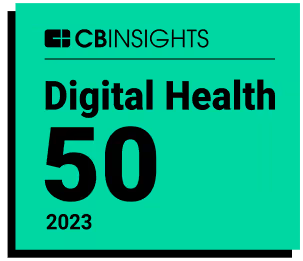Compliance and strategies to prepare for RADV audits
While RADV audits have long been a concern for Medicare Advantage plans, the Centers for Medicare & Medicaid Services (CMS) 2025 overhaul means every MA contract will now be audited annually, and many will face multiple reviews in the near term. That should also concern the provider organizations, MSOs, and ACOs that work with them under value-based or delegated risk contracts.
As this post will explain, the financial stakes and potential reputational impact are higher than ever, making it crucial to follow best practices to ensure year-round readiness for a RADV audit.
What you will learn
- What has changed in the Centers for Medicare & Medicaid Services’ approach to RADV audits
- Why provider organizations are directly impacted by these changes
- How collaboration (especially between health plans and providers) strengthens compliance
- What are the key tools that enable audit-grade documentation
RADV audits in 2025: What’s at stake and what’s new
Risk Adjustment Data Validation (RADV) audits are a key tool used by the Centers for Medicare & Medicaid Services to prevent fraud and ensure accuracy and accountability in risk adjustment.
Audit expansion and scope
Until recently, small numbers of Medicare Advantage (MA) plans underwent RADV audits each year, as an audit backlog accumulated. In 2025 the Centers for Medicare & Medicaid Services announced a new policy of auditing all Medicare Advantage health plans every year. And instead of checking just 35 records per plan as they previously did, auditors are now reviewing up to 200 records per plan per year. In addition, an effort is underway to clear the backlog of audits from 2018 through 2024 – with the number of auditing coders increased from 40 to roughly 2,000.
Implications for provider organizations
While health plans are the ones directly held accountable by the Centers for Medicare & Medicaid Services, they are not the only healthcare organizations that could be hurt financially by the outcome of a RADV audit. Management services organizations (MSOs), accountable care organizations (ACOs), and capitated provider groups could also have to pay as a result of value-based contracts or delegated risk arrangements.
And those financial implications can be serious – especially because of the policy of extrapolation. For instance, if an audit checks a small sample of a health plan’s enrollees and finds that the health plan received an average overpayment of $1,000 for each of those enrollees, the Centers for Medicare & Medicaid Services will extrapolate that the health plan received an overpayment of $1,000 for every single one of its enrollees – and will require the health plan to pay accordingly.
In addition to being affected by RADV audits, healthcare providers play a central role in ensuring compliance and audit-readiness by documenting patients’ medical conditions accurately in HCC coding. As such, plans often audit their providers for coding accuracy and documentation to ensure they are not exposed to undue risk.
Pro tip: Medicare Advantage plans aren’t the only organizations that need to make sure they’re audit-ready. So do MSOs, ACOs, and capitated provider groups – and ensuring accurate risk adjustment documentation from the start is critically important.
Foundations of Effective RADV Audit Preparation
With CMS now auditing all Medicare Advantage plans, audit readiness isn’t just about avoiding red flags—it’s about building the systems, documentation habits, and cross-organizational coordination that make compliance second nature. Here’s how to ensure you’re always prepared:
Ensure complete and consistent documentation
Every HCC submission should be backed by clear, detailed evidence in the patient record. Missing, inconsistent, or nonspecific documentation remains the most common reason audit findings occur. Consistency between progress notes, diagnoses, and coding supports defensible submissions.
Adopt a prospective approach to coding
Being audit-ready starts long before an audit notice arrives. Organizations that capture diagnoses prospectively—at or near the point of care—create documentation that is both current and verifiable. Prospective coding ensures that chronic conditions are recognized and supported as part of routine care, not as an afterthought during retrospective reviews. This approach not only improves accuracy but also reduces rework and risk exposure later in the audit cycle.
Monitor coding variation and trends
Plans and provider organizations should regularly analyze coding patterns to ensure they reflect true population risk, not inconsistent practices across clinicians or sites. Internal reviews help organizations stay aligned, ensuring any apparent “outliers” are explainable and well-documented rather than leaving the organization exposed to plan-level scrutiny.
Learn from past reviews
If an organization has experienced audit findings or internal discrepancies in the past, those should inform training and process improvements. Regular mock audits, retrospective reviews, and targeted education can help address vulnerabilities before the next official audit cycle.
Pro tip: Being audit-ready involves not just making sure your submitted HCC codes are accurate, but that they’re supported by clear evidence in patients’ medical records.
RADV readiness and compliance best practices
Given how high the stakes can be for healthcare organizations, it’s crucial to take concrete steps to avoid submitting unsupported HCC codes.
These best practices include:
Prioritize prospective risk adjustment
Rather than waiting until the end of the year to review charts and determine HCC codes, healthcare organizations should capture relevant diagnoses as soon as possible – preferably at the point of care. Taking a prospective approach to risk adjustment can help ensure that HCC codes are recorded when they’re fresh in the minds of clinicians and their supporting documentation is on hand. By reducing the need for retrospective workflows, healthcare organizations can help ensure that their documentation will be complete and trustworthy under a potential audit.
Strengthen coordination between plans and providers
Misalignment or miscommunication between health plans and provider networks can compromise the completeness and accuracy of their documentation, leaving organizations vulnerable to RADV audits. This risk can often arise when contracts end and organizational relationships shift, so it’s especially important to ensure that organizations don’t lose access to necessary information including medical records during these kinds of transitions.
Integrate risk adjustment with care quality initiatives
Healthcare organizations with risk-based contracts should use their CMS Stars and Healthcare Effectiveness Data and Information Set (HEDIS) care gap data to support the documentation requirements of RADV audits. This can help ensure that their HCC coding and supporting documentation are complete and accurate, while helping prevent duplicate requests for medical records.
Adopt shared technology infrastructure
AI-powered technology is an essential tool for ensuring that risk adjustment is complete, accurate, and defensible in an audit. It’s important to use a solution that not only suggests likely diagnoses based on patients’ medical records, but also pinpoints the documentation that supports a given diagnosis. For instance, Navina helps healthcare organizations identify risk-adjustable conditions, validate diagnoses in real time, and implement prospective HCC coding right from the point of care.
Build a culture of audit-ready compliance
As helpful as AI is in preparing for RADV audits, it’s still important for healthcare organizations to supplement it with additional steps such as conducting mock audits, assessing vulnerabilities, and estimating their potential RADV-related financial exposure in order to support their operational planning. And with the Centers for Medicare and Medicaid Services’ guidelines continuing to evolve, healthcare organizations should continuously educate their clinical and coding teams on these changes.
More generally, building a culture of audit-ready compliance requires making a habit of tracing all coded conditions to medical records in order to avoid submitting HCC codes lacking sufficient supporting documentation.
Pro tip: A prospective approach to risk adjustment doesn’t just improve compliance — it creates continuous audit-readiness throughout the year.
How Navina powers audit-ready documentation
Navina’s clinical AI helps healthcare organizations navigate RADV audits successfully. By identifying diagnoses in the patient record and surfacing them at the point of care, it ensures that each HCC code is supported by evidence. Not only does this streamline the process of HCC coding, it helps healthcare organizations take a prospective approach to risk adjustment to ensure year-round audit-readiness.
Key takeaways
- RADV audits are dramatically increasing in frequency, with all Medicare Advantage plans due to be audited every year and a large backlog of audits being cleared.
- That affects not only health plans, but also other types of healthcare organizations with risk-based contracts, such as ACOs, MSOs, and provider groups.
- To avoid financial and reputational harm, it’s crucial to ensure that all submitted HCC codes are supported by evidence in patients’ medical records.
- Best practices include boosting prospective risk adjustment, improving coordination between health plans and providers, using AI to streamline and improve HCC coding accuracy and building an organizational culture of compliance.
- Navina’s clinical AI helps ensure accuracy, defensibility, and alignment between provider groups and health plans for RADV audits










.png)













